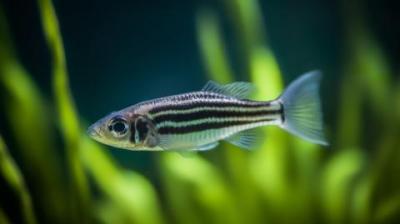Zebrafish Can Help Us “See” How Hearing Works
to

NIH videocast
In this hybrid lecture open to all NIH staff and the public, Katie Kindt, Ph.D., a senior investigator at the National Institute on Deafness and Other Communication Disorders (NIDCD), will explain how her lab uses molecular and microscopy-based methods to examine sensory cell function and development in the zebrafish model system.
The sensory cells of the inner ear, called hair cells because of hair-like structures that sit on top of each cell, detect sound and help maintain balance. These cells transform sound and head movement into electrical signals that are sent to the brain. In mammals, the inner ear is embedded in bone, which makes it difficult to observe and conduct research on hair cells.
Zebrafish are used as a model for studying hair cells and the process of hearing because they are fully transparent as they develop, which allows researchers to see how hair cells change and function as a zebrafish matures. Dr. Kindt will share how her lab uses live imaging to observe, in real time, how hair cells change and respond to the environment.
The virtual lecture will be open to all, with live captioning available. In-person attendance in Building 31, 6C Room A/B, is available to NIH staff only.
This page was last updated on Tuesday, May 28, 2024